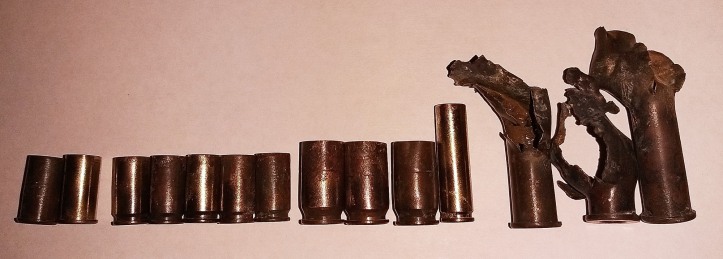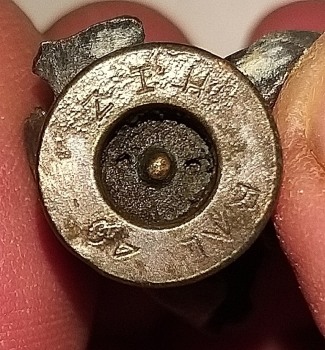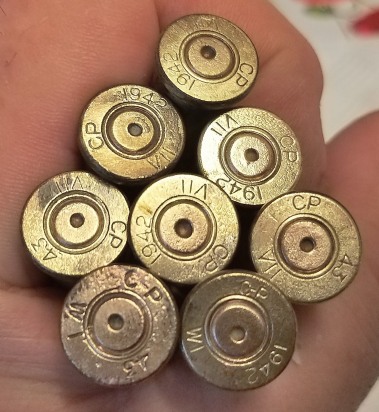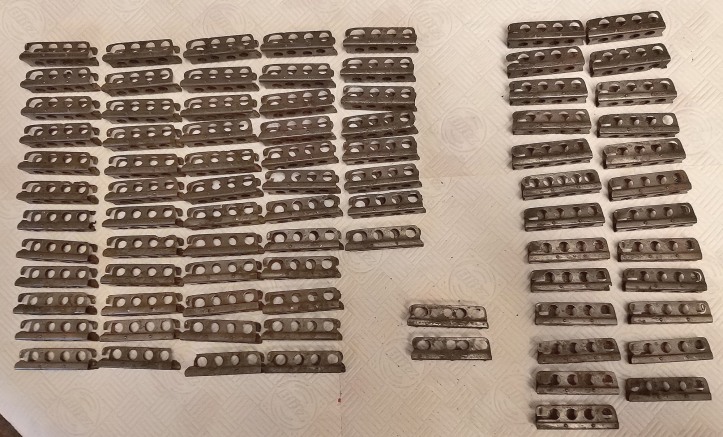Every now and again someone will find a site with an astonishing array of WW2 relics buried beneath the ground. Some of my fellow WW2 relic hunters have, in the past, found 14,000 dogtags, thousands of buttons and even hundreds of SOE time pencils, all at different sites, but all in one small dump pit.
I have had some similar experiences in the past, but nothing like what was uncovered over the past week or two. Just a shame the discovery wasn’t made when the WW2 Treasure Hunters film crew was there!
A good friend of mine, and landowner of a farm that straddles an old WW2 airbase, alerted me to an incredible discovery, and kindly asked if I’d like to come along and see ‘if anything was of any use’. I duly turned up and discovered that an old WW2 dump pit had been found, in which were a very large number of bomb fuzes. On closer examination, the pit was 4 to 5 feet in diameter, roughly circular, and had obviously been dug by hand. At the bottom of the pit was a layer of cartridge cases, (we will come to those shortly!), then a layer of molten metal, (mainly zinc), then some badly fire damaged bomb fuzes, then at the top of the layer, some not so badly damaged bomb fuzes. In the molten metal layer and sitting on top of it were quite a few incendiary bomb tile breakers and the remains of various other bits of fully burnt out ordnance.
What appears to have happened is that, sometime after the end of the war, 4 or 5 junior servicemen, (officers or old salts aren’t going to do it!), were sent out into the middle of the field to dig a pit. Everything was layered in the pit and the combustible material ignited. Once the flames were out, the pit was filled up and forgotten about. Until now!





The quantity of bomb fuzes was, in itself, astonishing. The fire had ensured that none had any of their small ‘magazines’ intact so they were fully inert and devoid of any explosive material.
However, the cartridge layer was even more astonishing.
The water table was quite high in the field, and just below the layer of molten metal, the cartridge cases were sitting in their own little pond. The molten metal had prevented any soil getting to the layer so it was basically a huge pile of cartridge cases in water. I did a bit of hand digging to try and determine how far down the layer went. I got my hand into the cartridge case layer up to my elbow and it WAS STILL GOING! Incredible.
Here’s a look at one small corner of the cartridge case layer….. (click on ‘full screen’…..I couldn’t work out how to shrink the vid!!)
We spent a few hours recovering as many cartridge cases as we could, but hardly seemed to be denting the pile. At one point we even found a seam of around 300 Lee-Enfield charger clips!
The cartridge cases were mainly 303s with quite a few 9mms thrown in for good measure, and the odd one or two 45cal ACP. As it was an old RAF base, it was assumed the 303s came from the bombers after a mission, but some of the 303s had Bren firing pin marks, and this theory wouldn’t support the presence of the charger clips or the 9mm or the 45s. So we finally decided that these cartridge cases had come from the small arms range, not that far away from the pit itself. At the end of the war, the RAF were doing a grand clear-up and just buried the lot beneath a pile of bomb fuzes, and set the whole lot alight. It was an incredible dig!





















Not one single live round was found during the whole dig, making it even more probable that this was the pile of spent cartridges from around the small arms range.
It’s going to take a long time to clean them, but I’ll get there. I have already promised to donate an awful lot to the various re-enactor groups out there to enhance their displays at military shows. But I’ll keep a few myself to make my own display!
It’s not every day you need to take buckets with you when recovering WW2 relics….

The Argentinian casing is one of those of 6,000,000 ordered from Argentina on 29 July 1942 or possibly one of 3,000,000 ordered from South America on 10 April 1942.
LikeLiked by 1 person
Many thanks. Great piece of info!
LikeLiked by 1 person
[…] up version of this to clean around 10,000 cartridge cases recovered in one day from one pit. (https://stephentaylorhistorian.com/2019/06/13/50000-ww2-cartridge-cases-one-pit/) I got hold of a cement mixer, some bags of kiln dried block paving sand and upgraded to a monster […]
LikeLike
[…] …… https://stephentaylorhistorian.com/2019/06/13/50000-ww2-cartridge-cases-one-pit/ ), and decided to do a bit of restoration. After all, using 100 or so of the 8,000 303 cartridge […]
LikeLike